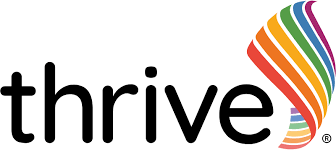Introducing the Thrive Approach….
As an onsite school alternative provision, many of our young people come to us and they have high SEMH needs that the school want some help in supporting them with. We wanted to ensure that we could support young people in the best possible way. U-educate directors Chris and Adam carried out their research and found the Thrive Approach is a rigorous, targeted, measurable and inclusive model. It aligned with our mission and ethos of supporting young people to get the best possible outcomes for them.
What is Thrive?
The Thrive Approach training is made up of a 12-week online course. This is where the magic happens and you are transformed into a Thrive practitioner. You are taught the five key elements of Thrive, and how to apply them:
1. Thrive Activities
Within our Alternative Provisions, Thrive is timetabled and the activities are used in a group and 1-1 basis. They are usually creative activities that you use as a vehicle to get to know the young person and support their development.
2. Relational Skills
My relational skills have improved vastly since completing the Thrive training course. Building trusted relationships with our young people is at the core of everything we do. I am armed with strategies to use. An example of this is the use of the strategy, “a co-regulator”. For a young person with substantial gaps in their emotional development, using this can help to teach them how to regulate themselves. The opposite of this would be they are sent to an isolation room, to think about what they have done on their own. This rarely works for the kind of children I work with.
3. Thrive Online
This is a online tool that assesses a young persons development and behaviour, and gives us strategies and activities to use to support their development. This has proved to be invaluable to us as termly reviews/revisions of action plans, groups and individual, show us the impact our work has had.
4. Thrive Theory and neuroscience
We liked that the Thrive Approach is underpinned by child development and attachment theory and neuroscience. As practitioners we can understand a young person’s behaviour on a deeper level. Many of the activities that we carry out in our thrive sessions, means that we can explain to the young people exactly what is happening to their brains and bodies when they are dysregulated. It gives them clarity and understanding. I also use this information when I’m training colleagues.
Be Curious not furious…..
The very nature of what we do as an on-site Alternative Provision means that we are working with some very vulnerable young people. Thrive has taught me to reflect and view behaviours through a different lens. One saying that I took from my training was to, “be curious not furious”, (not that I was ever furious) but it taught me to be a detective around a young person’s behaviours and shine that light on them. It taught me to assume that every behaviour is a communication, and to delve deeper to find out what is really going on for that young person.
If you are a school, an alternative learning provision or in any kind of educational facility working with young people, I couldn’t recommend training in the Thrive Approach enough.
The irony is that child development theories and neuroscience research has been available to us for years. As a Thrive practitioner, I go back to basics and identify gaps in earlier developmental phases. For young people that have significant developmental needs, this is exactly what we should be doing. As people who work with young people, we owe this to them, so they are given the best possible chance in life. Every child really does matter! Let’s make sure that we show them this.
Rachel O’Connor is an Alternative Provision Practitioner with U-Educate.

